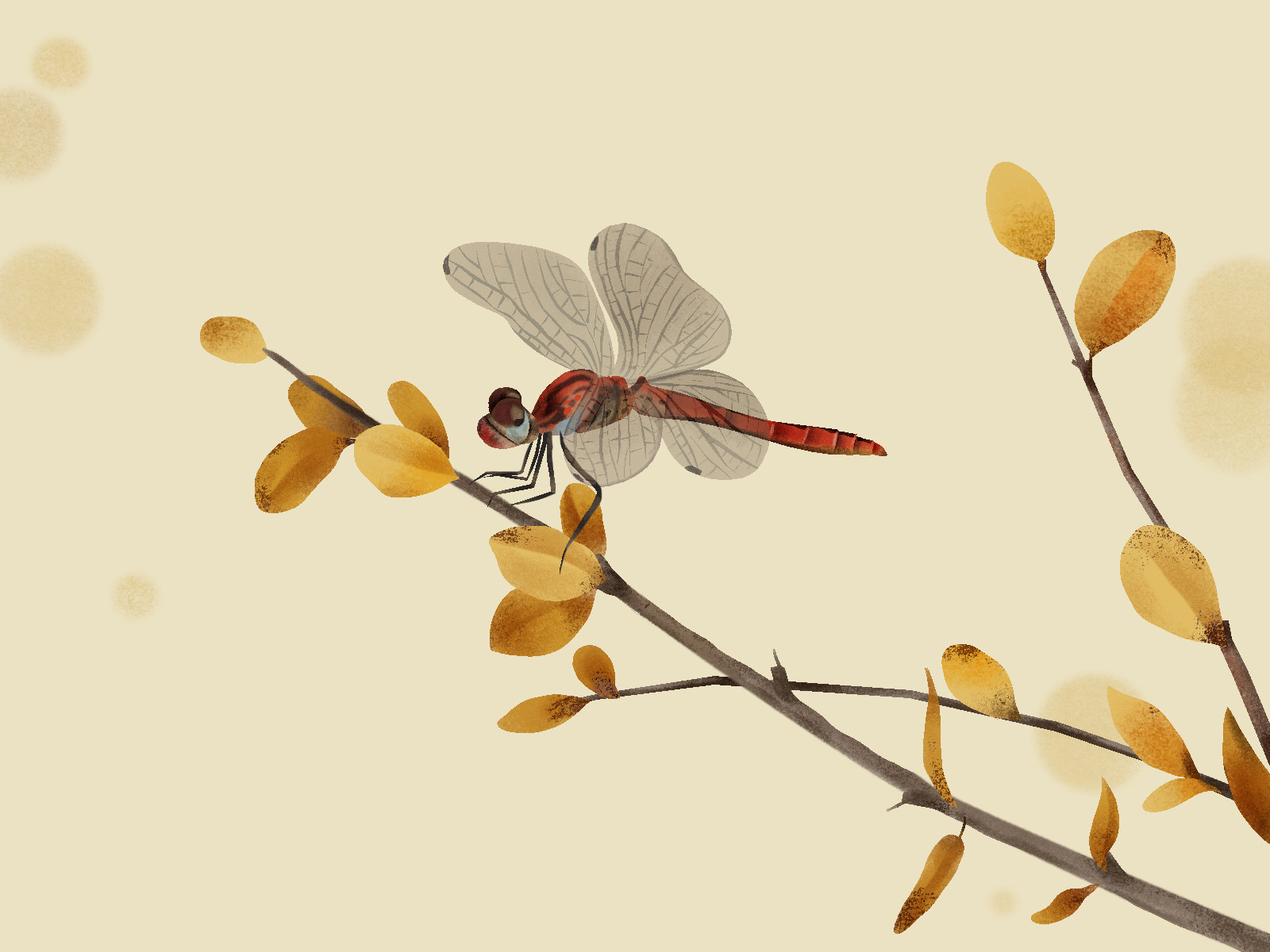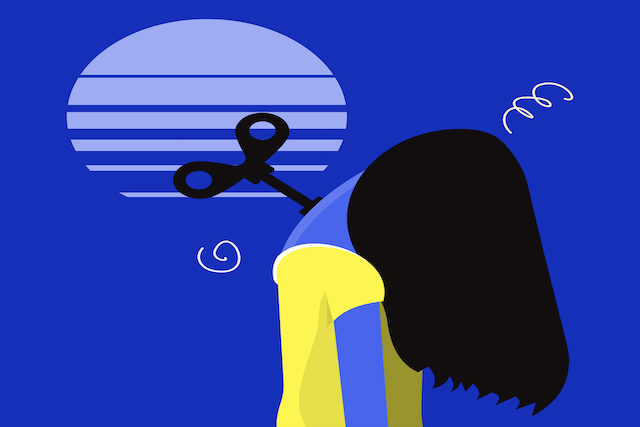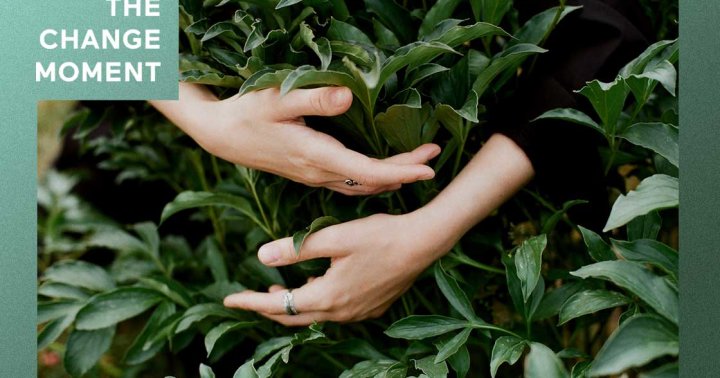Best of the Haiku Challenge (September 2022)
Announcing the winning poems from Tricycle’s monthly challenge The post Best of the Haiku Challenge (September 2022) appeared first on Tricycle: The Buddhist Review.

Dragonflies are elusive creatures. Difficult to follow as they veer in unpredictable directions, they can appear out of nowhere. . . and vanish just as easily. Their wings are delicate, even fragile, but their bodies are covered with hard plates reminiscent of armor. Dragonflies have been known to cross oceans in their migrations, and they have journeyed over vast expanses of geological time as well. The earliest fossils of dragonfly-like insects are 325 million years old.
The winning and honorable mention poems for this month’s haiku challenge explored diverse aspects of these remarkable creatures—their distinctive shape, their life force, and their evanescent beauty.
Mariya Gusev used the shape of a dragonfly’s body to explore one of the deepest paradoxes of modern life. Kelly Westhoff discovered the resilience of nature in a dragonfly sailing through the blue morning sky after a violent storm. Stefanie Bucifal found something even more delicate than the wings of a dragonfly in their shadows on the ground.Congratulations to all! To read additional poems of merit from recent months, visit our Tricycle Haiku Challenge group on Facebook.
You can submit a haiku for the October challenge here.
***
WINNER:
a problem of shape —
the human life, long, narrow —
like a dragonfly
— Mariya Gusev
This poem breaks some of the most widely observed “rules” of haiku. The first line offers an abstraction, rather than establishing a concrete image or scene. The second makes broad generalizations about human life. Only in the third line do we find out what the poem is about. Even then, the season word is used figuratively. There are no actual dragonflies in the poem. And yet, in flouting the usual conventions of haiku, the poet has managed to produce a strikingly original modern verse.
When asked to comment on her inspiration for this haiku, the poet wrote:
I was thinking about dragonflies and how they look, and feel, physically to me. I remembered catching many as a child, and marveling at their sleek, shiny bodies, which although somewhat bendable, were also strong as steel. A haiku formed in my mind as I thought about human life, which is also long (about 80 years on average) and narrow (increasingly disconnected from the rest of nature). Like a tiny metal dart that gets thrown, flying in a straight line for almost a century until we reach the end. A dart that gets to fly through an abyss of loneliness.
The poet’s remarks account for the emotional power of the poem, but not for the paradox of its central image. For if a human life is long, a dragonfly is not. Its length—from half an inch to five inches—only seems long in relation to its width.
The poet hints at that paradox in the opening line of her haiku. The problem of human life is not its length. . . or its width. . . but the ratio between the two. “A problem of shape” the poet called it. The life of a modern human is too long for its width, too narrow for its length.
What makes the poem not simply a good haiku but, in my opinion, a masterpiece, is how it expresses one of the deepest frustrations of contemporary life. In doubling the human life expectancy since the turn of the 19th century, we have stretched it thinner. We live longer on average, but the range of our experience as it relates to the natural environment is narrower than ever before. The result is an “abyss of loneliness” we must pass through from one end of life to the other.
I wrote earlier that there are no actual dragonflies in the poem. But that is not quite true. In some ways the dragonfly of the poem is more real to us because we are invited to climb inside of its body and feel its shape—and its trajectory through life—as our own.
As a further point of interest: It is unlikely that any English language haiku journal would agree to publish this poem. It lacks the earmarks of haiku as a form of literature derivative of Japanese poetry. The poet has chosen to use 17 syllables and a season word to express her thoughts about life, but in terms of style and poetic technique, she has thrown her lot in with Emily Dickinson rather than with Bashō.
HONORABLE MENTIONS
morning bright and blue —
a gift for the dragonfly
who survived the storm
— Kelly Westhoff
more delicate than
the wings of a dragonfly—
only their shadow
— Stefanie Bucifal
♦
You can find more on September’s season word, as well as relevant haiku tips, in last month’s challenge below:
Fall season word: “dragonfly”
Unlike dragonflies
parallel lines never meet
they must get lonely
I watched as two dragonflies came together above the lake and realized they must be mating. This called to mind something I learned in high school, and I saw the opportunity for a bit of melancholy mathematical satire. Poor Euclid.
Submit as many haiku as you wish that include the early autumn season word “dragonfly.” Your poems must be written in three lines of 5, 7, and 5 syllables, respectively, and should focus on a single moment of time happening now.
Be straightforward in your description and try to limit your subject matter. Haiku are nearly always better when they don’t have too many ideas or images. So make your focus the season word and try to stay close to that.
REMEMBER: To qualify for the challenge, your haiku must be written in 5-7-5 syllables and include the word “dragonfly.”
Haiku Tip: To master haiku, learn the basics!
For those new to haiku, it may feel presumptuous to speak of mastering the art. But there is something to be gained from keeping our eye on the prize right from the beginning—or at least knowing what it is.
To master haiku is to live so fully within its two basic conventions that following them becomes the principal creative and imaginative endeavor of our lives. It means to live, eat, breathe, sleep, work, love, and eventually die inside of those conventions, using them to express every nuance of our experience.
The first convention of haiku, the fixed 5-7-5 syllable pattern, reminds us that all things express themselves through form. A wild rose has five petals. The heart has four chambers. The primary colors, three in number, combine to make all of the rest. There is infinite variety in the natural world, but all of it fits into the greater pattern of the whole. Everything has a form.
Given time and practice, the 5-7-5 syllable pattern enters so deeply into our consciousness that it transforms our consciousness, giving us “a mind to follow Nature and return to Nature.” For Basho, this was the secret of all great art.
The second convention, the use of season words, binds us to the wisdom of Nature. Just as all beings exist within the limits established by their form, they exist in relationship to all other beings because of time. Nothing is static. What goes up comes down. Whatever eats is also eaten.
For the haiku poet, the whole universe is constantly becoming—forever dying and being reborn. The season words locate us within the circle of that Great Reality, showing us that we belong to it in any given moment, and showing us where we belong.
And so, nothing could be simpler than learning to write haiku, because there aren’t too many things you have to keep in mind. At the same time, there is no end to learning it. After five decades of writing them, I have come to the conclusion that to master haiku is simply to write haiku daily for one’s entire lifetime. You can’t fail to master haiku if you do that.
A note on dragonflies: Some 3,000 species of dragonfly are known to exist in the world today. Most live in the tropics, although they are a common sight in temperate regions as well. Dragonflies appear in summer but are most notable in early autumn, for which reason they are associated with that season in haiku. Adult dragonflies have large, compound eyes, two pairs of transparent wings, and a long body. The iridescent, metallic coloration of many dragonflies makes them especially noticeable in the clear autumn light. Dragonflies are a favorite theme in Japanese art and literature. In the Kojiki, Japan’s oldest literary work, the word Akitsushima (“Island of the Dragonfly”) appears as an alternate name for Japan.

 ShanonG
ShanonG 































